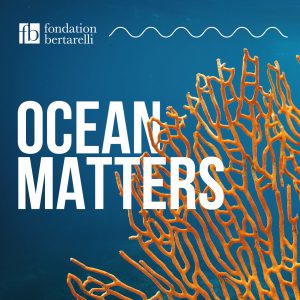On Tuesday 15th September, the first of a new series of marine science seminars was held online. The session, “Rats, Seabirds and Reefs: Holistic Approaches to Island Restoration” featured an international scientific panel chaired by Professor Heather Koldewey.
A recording of the seminar is now available to watch here:
Below are answers to some of the remaining questions which there wasn’t time to answer during the live session.
What is our current understanding of how higher nutrient levels around rat free islands influence coral bleaching susceptibility in the Chagos Archipelago?
Casey Benkwitt: In lab studies, higher natural nutrient levels (like those from seabirds or fish) have been shown to reduce coral bleaching susceptibility. But, our field surveys in the Chagos Archipelago from before versus ~3 years after the 2015/2016 mass bleaching event did not show increased coral resistance around rat-free islands (i.e., coral loss was similar around rat-free and rat-infested islands). There are a few possible explanations for this difference between lab and field studies – one is that seabird nutrients reduce bleaching susceptibility during less extreme heat waves, but the 2015/2016 event was so intense and prolonged that it overpowered any benefits of seabird nutrients. Even though resistance wasn’t higher around rat-free islands, we’re now looking at whether reefs around rat-free islands recover more quickly, which is possible given the high cover of CCA and high biomass of herbivores near these islands. If you want more info, see Benkwitt et al. 2019 in Global Change Biology where we answer this question in detail!
Do you think there could be a carrying capacity of seabird populations in the Chagos archipelago based on fish productivity in the open ocean in which they can feed. i.e. could recovery of seabird numbers also be limited by food availability?
Pete Carr: A good question that has not been answered anywhere in the world regarding seabird recovery to the best of my knowledge. I suspect there is a prey availability carrying capacity cap, other top predators in different ecosystems most certainly are. It would be an interesting question to try and answer. With the methodology from my talk and the data I have, we could calculate the maximum number of breeding pairs if all islands were cleared of rats and rewilded to option C (the real time rewilding to savanna and native forest). I am guessing there are papers giving food consumption by seabirds (e.g. Danckwerts et al, 2014 for WIO). So you could get an order of magnitude of the prey needed. How one could calculate if there is that amount of prey available in Chagos is not a question I could answer. Be nice to think about it though.
Which of the three models presented would be the most practical in terms of cost effectiveness and value to the ecosystem?
Pete Carr: Based upon Casey’s talk (and Graham et al., 2018), that proves the cross-ecosystem benefits of seabird islands, plus, maximising breeding numbers of seabirds that could possibly be a source for depleted seabird populations elsewhere in the Indian Ocean, it would be logical to go for the highest totals – Option C. Option A did not restore a seabird-driven ecosystem (92% of island not being available to breeding seabirds because it is abandoned plantation) and therefore is not a viable rewilding option. Option B cannot be achieved in reality as I said, one cannot create wetlands on porous coral or, beach in an environment where there are “shifting sands” depending on prevailing winds and tides – and is not necessary because RSF graphs proved and the pie charts demonstrated we only need (and can only) create two habitats, savanna (read open areas) and native forest. Not so much a true CBA but a logical decision making process.
In Kenya, the government banned the use some chemicals used to eradicate the Indian House Crows which are believed to be a threat to other indigenous birds which they feed on within Mombasa Island and along other cities in the coastline. Is there an effective way of eradicating the crows without posing any danger within the community where they mostly feed?
Sarah Havery: Without knowing the specific details it is difficult to suggest whether eradication is possible or not – given the location it is likely that long-term control to reduce the population would be the most feasible approach. There have been some successful bird eradications from islands in the Seychelles, which I believe was achieved by shooting.
Breeding success studies are ongoing across Seychelles for several species, as expected there is lower breeding success on islands with rats but we also have population decline on an island with no rats. Restoration will/should lead to seabird population increase but other factors may also interfere with population recovery, like food availability. Have you been investigating this in the Chagos Archipelago? Are there breeding success studies for seabirds on the Chagos Islands?
Pete Carr: We are not investigating food availability (but suspect as a result of this webinar it may be researched in the future and see above). Please read Carr et al., 2020 in Bird Conservation International for the latest assessment on breeding seabirds.

